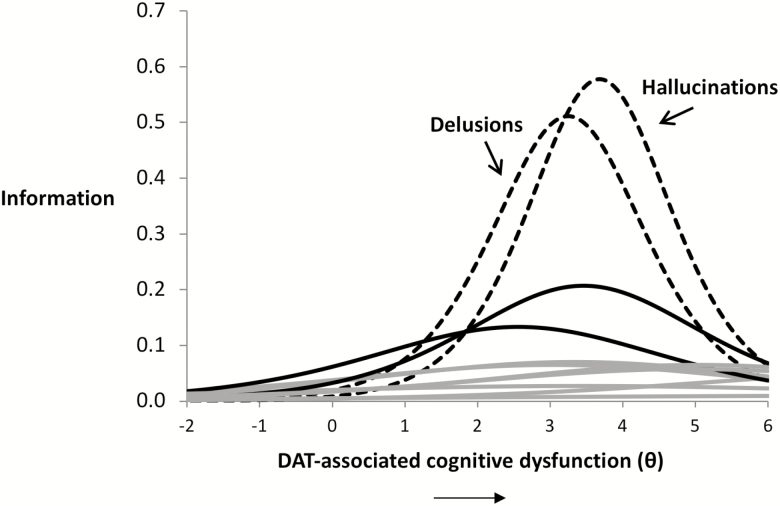Figure 2.
Item response theory (IRT) model of the relation between neuropsychiatric symptoms (NPS) and dementia of the Alzheimer’s type (DAT)-associated cognitive dysfunction. The ability of the 12 Neuropsychiatric Inventory Questionnaire (NPI-Q) NPS to index the continuum of DAT-related cognitive dysfunction is presented. The X-axis depicts the continuum of DAT-associated cognitive dysfunction, ranging from low to high levels of severity, representing the b parameter of the IRT function. The Y-axis denotes “information gained,” referring to the ability of an item (i.e., a NPS) to indicate the latent continuum, a derivative of the a parameter of the IRT function. Here, we see that NPI-Q Hallucinations and Delusions index DAT-related cognitive dysfunction more strongly than other symptoms from the NPI-Q, particularly so at greater levels of DAT-related cognitive dysfunction.

